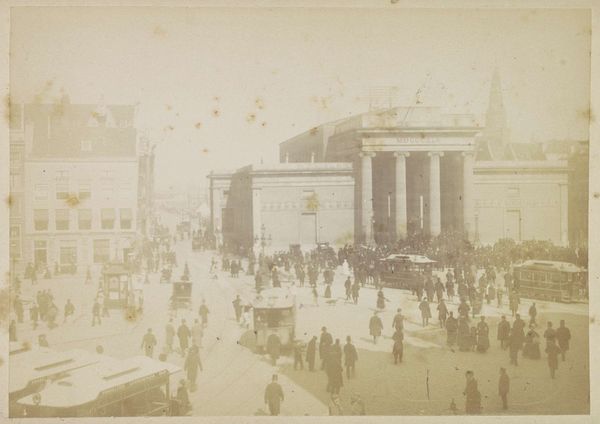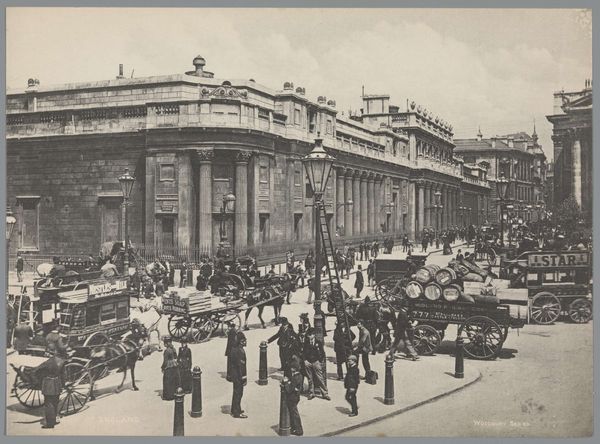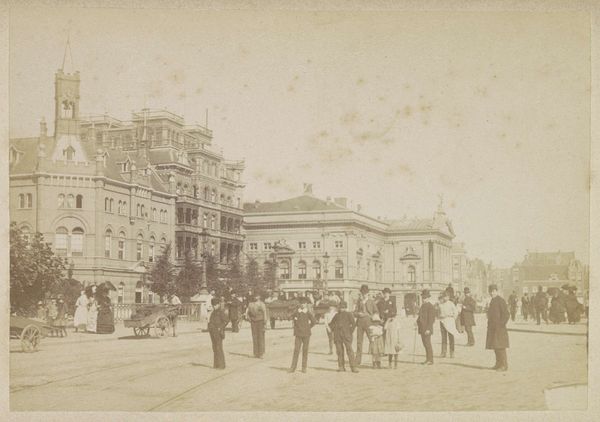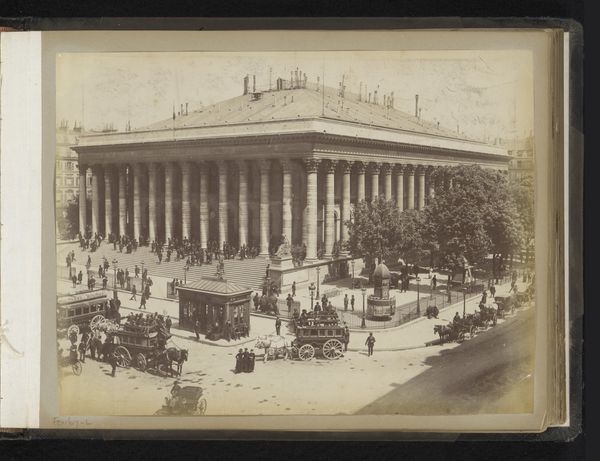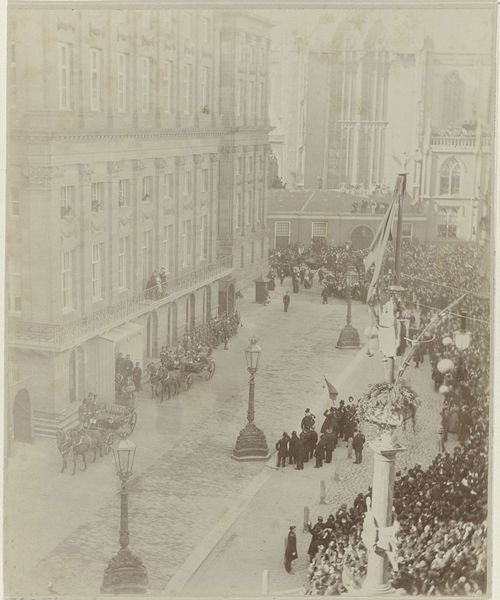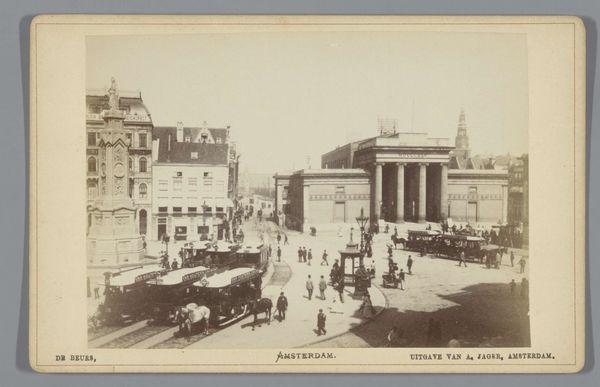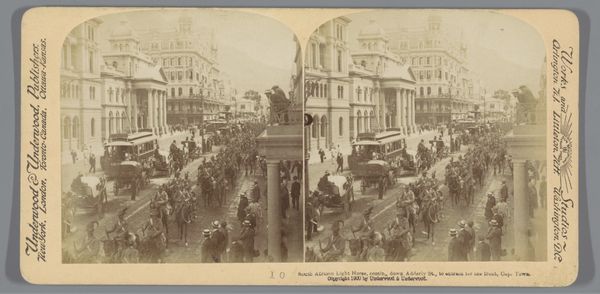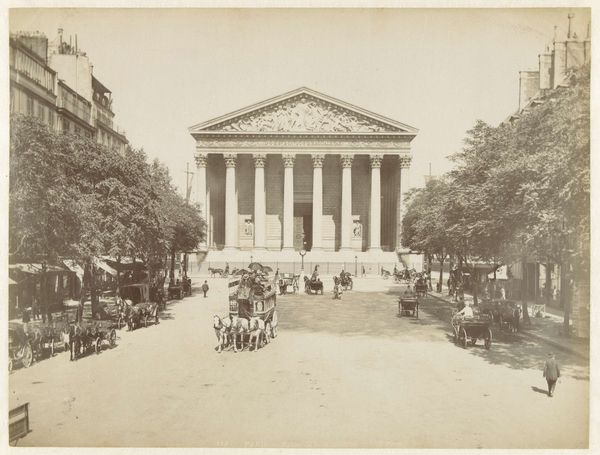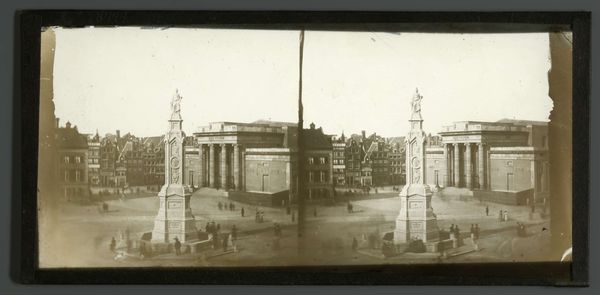
photography, albumen-print
#
dutch-golden-age
#
street-photography
#
photography
#
cityscape
#
genre-painting
#
albumen-print
#
realism
Dimensions: height 95 mm, width 134 mm
Copyright: Rijks Museum: Open Domain
Editor: So, here we have "Gezicht op de Dam met rechts de Beurs van Zocher," circa 1860-1900, an albumen print attributed to Andries Jager. It really captures a sense of bustling city life; a crowd converges in front of a very imposing building. What's your read on this photograph? Curator: From a materialist perspective, this image presents an interesting paradox. The albumen print process itself—the meticulous coating, sensitizing, and developing—speaks of a burgeoning industry striving for objective representation. Yet, what's being represented? Not just the architecture of Zocher's Exchange, but a whole network of social relations playing out in this public space. Consider the blurred figures—laborers, merchants, consumers—all subjects *of* and *for* emerging capitalist structures. Editor: That's interesting, I hadn’t thought about the blur as evidence of labor. How does that material process influence our understanding of the "realism" style it's often tagged with? Curator: Well, “realism” here isn't simply a faithful depiction. It's a carefully constructed image *made* real through photographic chemistry and printing techniques. The choice of albumen, for instance, wasn’t accidental, but determined by the demand for relatively cheap yet detailed replications. Note also that the light and shadow aren’t perfectly natural – there are retouches that were incorporated. Do you notice that some figures are more sharply in focus than others? Editor: I do now! So, the artist may have manipulated the image, even at this relatively early stage of photography, to serve the narrative or communicate specific ideals. Curator: Precisely. We’re witnessing the application of a supposedly objective medium employed to frame very subjective and social ideas. In this context, the photo documents a particular stage in Amsterdam's commercial development, all facilitated by advances in manufacturing techniques – albumen printing. Editor: It changes my whole view. Seeing it as a staged representation tied to commercial interests makes it far more compelling than just a snapshot of the past. Curator: Exactly! By analyzing the materials and social conditions that birthed this photograph, we reveal a far richer story about its creation, consumption and inherent biases.
Comments
No comments
Be the first to comment and join the conversation on the ultimate creative platform.
